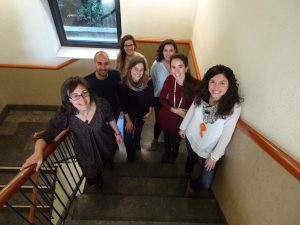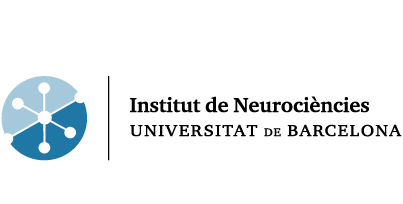
ROSER PUEYO
Position: Associate Professor
Research team
Julia Miralbell Blanch
Assistant Professor
jmiralbell (at) ub.edu
Julia Ballester Plane
Assistant Professor
julia.ballester (at) ub.edu
Olga Laporta Hoyos
Postdoctoral researcher
olgalaporta (at) ub.edu
Xavier Caldú
Associate Professor
xcaldu (at) ub.edu
Contact details
Dr. Roser Pueyo
Department of Psicologia Clínica i Psicobiologia
Faculty of Psychology, Pg. de la Vall d’Hebron, 171
08035 Barcelona (Spain)
+34 93 312 50 53
rpueyo (at) ub.edu
Research Interests
Cerebral palsy (CP) is the most common cause of physical disability in children and it remains as a major problem due to its chronicity and its medical, social and educational implications.
Our previous study was focused on dyskinetic CP. The study of dyskinetic CP is relevant because has increased its prevalence in children born at term and/or with normal weight. However, cognition and neuroimaging have been scarcely studied in dyskinetic CP. During the last years, we have carried out a project to describe the neuropsychological profile of people with dyskinetic CP and their neuroanatomical correlates.
We are now focused on testing whether an on-line and home-based cognitive training exerts a positive effect not only on the cognitive and daily functioning of children with CP but also on other measures such as participation and quality of life. We will further test whether there are changes in brain function and structure due to brain plasticity.
Current Research Lines
- Dyskinetic cerebral palsy
- Neuroplasticity
Technologies / methods
- Neuropsychological assessment.
- Neuroimaging analysis.
Highlighted publications
· Laporta-Hoyos, O.; Fiori, S.; Pannek, K.; Ballester-Plané, J.; Leiva, D.; Reid, R.B.; Pagnozzi, A.M.; Vázquez, E.; Delgado, I.; Macaya, A.; Pueyo, R.; Boyd, R. (2018). Brain lesion scores obtained using a simple semi-quantitative scale from MR imaging are associated with motor function, communication and cognition in dyskinetic cerebral palsy. NeuroImage: Clinical 19: 892-900.
· Ballester-Plané, J.; Laporta-Hoyos, O.; Macaya, A.; Póo, P.; Meléndez, M.; Toro, E.; Gimeno, F.; Narberhaus, A.; Segarra, D.; Pueyo, R. (2018). Cognitive functioning in dyskinetic cerebral palsy: Its relation to motor function, communication and epilepsy. European Journal of Paediatric Neurology 22(1): 102-112.
· Ballester-Plané, J.; Schmidt, R.; Laporta-Hoyos, O.; Junqué, C.; Vázquez, E.; Delgado, I.; Zubiaurre-Elorza, L.; Macaya, A.; Póo, P.; Toro, E.; de Reus, M.A.;, van den Heuvel, M.P.; Pueyo, R. (2017). Whole-brain structural connectivity in dyskinetic cerebral palsy and its association with motor and cognitive function. Human Brain Mapping 38(9): 4594-4612.
· Laporta-Hoyos, O.; Pannek, K.; Ballester-Plané, J.; Reid, L.B.; Vázquez, E.; Delgado, I.; Zubiaurre-Elorza, L.; Macaya, A.; Póo, P.; Meléndez, M.; Junqué, C.; Boyd, R.; Pueyo, R. (2017). White matter integrity in dyskinetic cerebral palsy: relationship with intelligence quotient and executive function. Neuroimage-Clinical 15: 789-800.
· Laporta-Hoyos, O.; Ballester-Plané, J.; Póo, P.; Macaya, A.; Meléndez, M.; Vázquez, E.; Delgado, I.; Zubiaurre-Elorza, L.; Lozano, V.; Narberhaus, A.; Toro, E.; Segarra, D.; Pueyo, R. (2017). Proxy-reported quality of life in adolescents and adults with dyskinetic cerebral palsy is associated with executive functions and cortical thickness. Quality of Life Research 26(5): 1209-1222.



